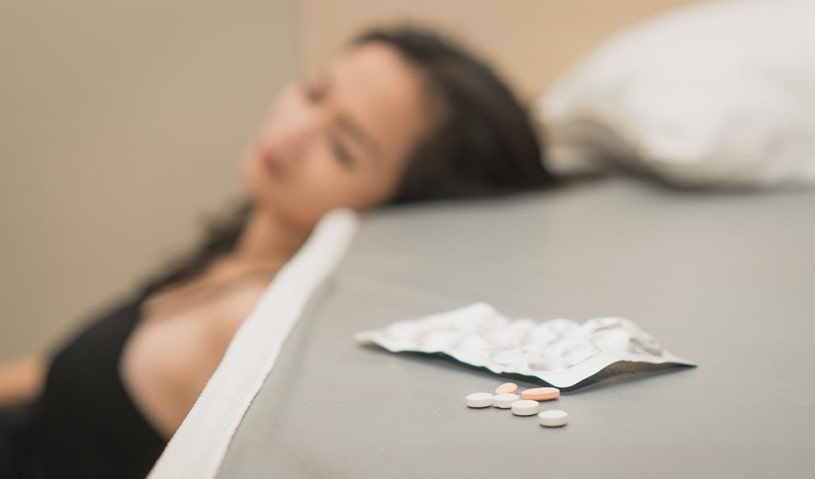Tramadol (brand name Ultram) is one of those drugs that can be extremely helpful if used according to the prescribed treatment schedule, but it’s essential to have the correct information about the health risks involved. Ultram is a schedule IV controlled substance. The listing was done because it can be highly addictive. If the patient ends up taking too high of a dose, the potential risks of an OD on Tramadol end up being much higher for them. The effects of Tramadol OD or Ultram abuse can be life-threatening.
Table Of Contents:
Therefore, it is necessary that the patient follows their physician’s prescription and has all the essential information that can keep them away from an overdose. Abuse of the substance or taking the wrong dosage can lead to a Tramadol OD.
Overdose on Tramadol Causes
In 2019 alone, 50,000 people died because of an opioid overdose. Close to 73% of the deaths involved the use of synthetic opioids. Having an OD on Tramadol is something that isn’t uncommon. Overdoses on opioids happen because of different reasons. Not everyone needs to take the same amount of drugs to overdose on them.

According to the information provided by the US National survey on drug use and health in 2014, 3.2 million people older than 12 years old have used it for non-medical reasons at least once during their lifetime. The amount of the drug that can cause an OD differs from person to person. Of course, it depends on their metabolism, current state of health, and intake form. Ultram stays in the body for about six hours, but the detection is possible for days after use. Depending on the person’s body composition and how long they have been taking it, they could develop a tolerance to the drug itself. It could mean that they will probably take a much higher dose without experiencing an overdose on Tramadol. Sometimes they won’t even experience most of the side effects because their overdose amount will differ.
On the other hand, if someone has never been exposed to the drug or even regular opioids before in their lives, the Tramadol overdose amount for them would differ. They could take a much lower dose and still overdose and potentially lose their life to it too. Even if they never showed any signs of Tramadol overdose.
It is also possible for a patient’s tolerance to opioids or just Ultram to change. If someone with a high tolerance tries to quit using the drugs they have been using, but later on, they relapse and start using again, they could overdose on Tramadol with a much lower dose than they were used to before. This is because once their body is clean or is getting a lower amount of Ultram, there are risks that the body loses the tolerance that had built up.
So any dose that a physician medical health professional hasn’t prescribed could end up being lethal.
Factors That Can Contribute to Tramadol Overdose
Below Are a Few Factors That Can Contribute to the Overdose:
- History of Addiction: If a patient has a history of addiction, the risks for them to relapse and use the drug again are higher. The sudden change intolerance due to reuse can lead to an OD.
- Uncontrolled doses: Taking doses that are too frequent or large can lead to too much of it in a patient’s system. The excess can lead to a Tramadol OD.
- Mixing it with other substances: Purposeful abuse of Ultram or accidentally taking it with other medications that are central nervous system depressants (for example, Valium or Xanax) can lead to a poisoning, along with mixing it with alcohol.
Overdose Amount
The usual therapeutic dosage varies depending on the opioid or opiate tolerance. The starting amount is only 25 mg at a time and no more than 100 mg per day for people who never used it before. After they have developed tolerance, they can increase the dosage. However, never do this without consulting a physician. The largest recommended dosage per day is 400 mg.
The FDA warns against taking a dose higher than 400 mg a day, and an amount higher than that could cause Tramadol OD. Most lethal doses are around the 2g-8g mark. However, it can happen much lower, too, depending on the patient’s body composition and tolerance.
Symptoms of Tramadol Overdose
Tramadol Overdose can come on unexpectedly, especially if the patient has accidentally taken a higher dose than recommended, is used to Ultram abuse, or has accidentally mixed it with a substance that could have caused a reaction that expedited the OD. Even with all the correct information in hand, any of these circumstances can lead to an overdose.
Some of the Indicators a Person Overdosed On the Drug Are:
- Seizures
- Unconsciousness
- Respiratory distress
- Irregular heart rate and rhythm
- Vomiting
- Extreme drowsiness
- Changes in pupil size
- Muscle pain
- Pale or clammy skin
- Hyperthermia
In extreme cases, OD can have some severe consequences. For example, it can be pulmonary edema, cardiac arrest, a liver failure because of increased serum aminotransferase levels in some patients. A study consisting of 71 Tramadol overdose patients showed that 8 of them suffered a seizure, rounding up to over 10%. In these cases, they need extended hospital care.
In the worst-case scenario, an OD can be deadly. Unfortunately, permanent and unstoppable brain damage can result. Specifically, this is from the resulting shallow breathing. Hence, not enough precious oxygen can get to the brain.

If someone notices any of these signs, they should immediately call 911. While waiting for the ambulance, try to remember everything one may know about the person. This includes his/her prior medical condition. Moreover, note the amount and form of the drug that the victim took.
What is the Treatment for Tramadol Overdose?
The treatment of Tramadol overdose should above all imply adequate ventilation. This is because of the person’s breathing difficulties. Consequently, fainting is a high possibility. Also, people use a substance called Naloxone to reverse the effects of an OD on Tramadol. Naloxone binds itself to the same receptors in the brain that it affects. It’s like a lock and key. In this case, the key is not the drug itself. Therefore, by taking its place, this prevents adverse outcomes.
However, one should use this substance very carefully and with medical supervision. It’s because Naloxone can cause seizures. In more severe cases, the patient may need to receive oxygen or defibrillation.
Ultram Addiction Recovery
The road to recovery after addiction isn’t easy. Even after the initial detox from the OD on Tramadol is done, there’s much more work that goes into staying clean. Tramadol is weaker than Oxycodone or other opioids in terms of potency. However, the withdrawal symptoms of Ultram can be very uncomfortable and encourage relapse. The patient should enter into a psychotherapy program at an addiction treatment rehab facility where they can get to the bottom of and underlying mental health issues that could have led to the OD in the first place. This would also help with any PTSD that could have stemmed from the actual OD itself. That will help them work out their problems and help them live a better, safer life in the future.
Hope Without Commitment
Find the best treatment options. Call our free and confidential helpline
Most private insurances accepted
Page Sources
- Mattson CL, Tanz LJ, Quinn K, Kariisa M, Patel P, Davis NL. Trends and Geographic Patterns in Drug and Synthetic Opioid Overdose Deaths — United States, 2013–2019. https://www.cdc.gov/mmwr/volumes/70/wr/mm7006a4.htm?s_cid=mm7006a4_w
- Abuse, S., & Administration, M. H. S. (2014). National survey on drug use and health. https://www.ncbi.nlm.nih.gov/books/NBK519735/
- FDA, ULTRAM Full Prescribing Information https://www.accessdata.fda.gov/drugsatfda_docs/label/2009/020281s032s033lbl.pdf
- LiverTox: Clinical and Research Information on Drug-Induced Liver Injury. Bethesda (MD): National Institute of Diabetes and Digestive and Kidney Diseases. 2012. Tramadol. https://www.ncbi.nlm.nih.gov/books/NBK548235/
- Ryan, N. M., & Isbister, G. K. (2015). Tramadol overdose causes seizures and respiratory depression but serotonin toxicity appears unlikely. Clinical Toxicology, 53(6), 545-550. https://pubmed.ncbi.nlm.nih.gov/25901965/




